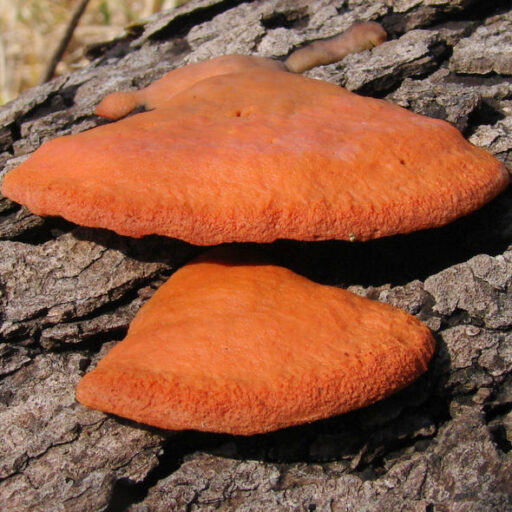Polypore mushrooms are a large group of fungi that are characterized by their tube or pore-like hymenophore, the spore-producing surface.
Form and Function
“Polypores can take various forms. They may be pileate, having a pileus or distinguishable cap. Some may be stipitate, having a stalk. Or they may be resupinate (effused), lying flat on the substrate. Also, may be effused-reflexed, which mean they lie flat on a flat (i.e. parallel to the ground) substrate, but form shelves where the substrate surface is not parallel to the ground. Some genera are consistent, with all its species having one of these forms. More often there are mixed forms within a single genus. This character is more important at the species level, although sometimes even a single species may not be consistent.”
“Most polypores are wood decay fungi. There are two fundamentally different ways in which wood can be rotted. Wood is composed mostly of two substances: cellulose (white) and lignin (brown). Cellulose forms the primary wall of all plant cells. Furthermore, many plants add a second wall of lignin inside the primary wall, especially in wood. Brown rot fungi can degrade only the white cellulose and leave the brown lignin behind. In their simplest form, white rot fungi degrade the lignin and leave the white cellulose behind.” Tom Volk, Polypore Primer.
Found in a variety of habitats. Polypores play an important role in the ecosystem by breaking down dead wood and returning nutrients to the soil. Many are parasitic and feed on living trees, often to the demise of the tree.
Polypore Mushrooms at Indiana Fungi
See also:






